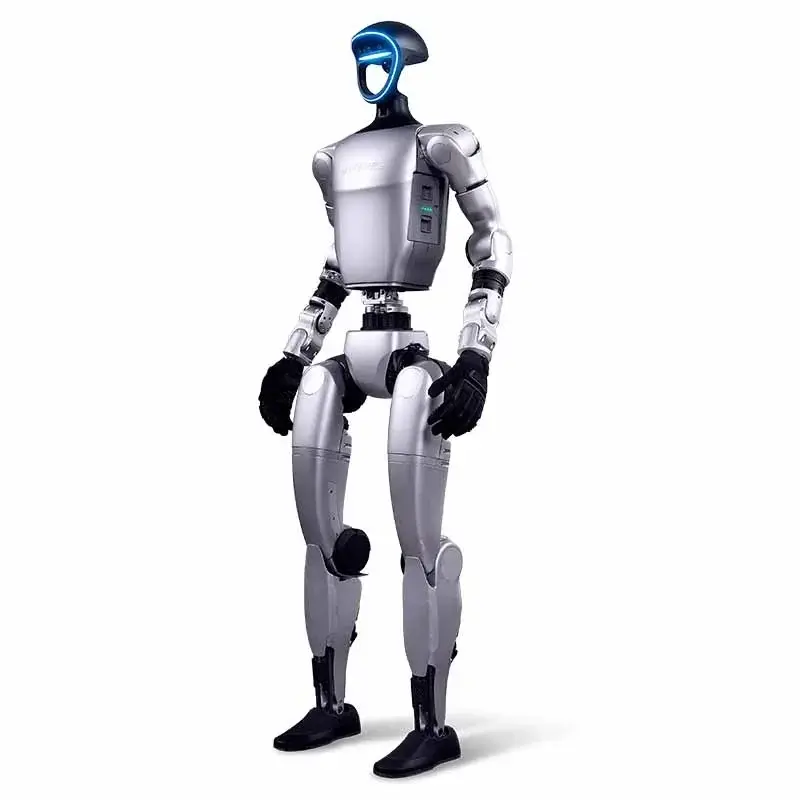The transformation of the art of cabinet making: embracing the power of CNC
The field of cabinet manufacturing is undergoing a quiet and profound revolution. Gone are the days of relying solely on meticulous hand-planing, fixture setup and hard manual cutting. Today, the drivers of precision and efficiency are Computer CNC (CNC) Processingfundamentally changed the concept, prototype design and manufacturing of customization and production cabinets. If you are a designer, architect, custom furniture manufacturer, or even a homeowner with high demands, understanding CNC cabinet manufacturing is the key to unlocking unprecedented features.
Beyond saws and chisels: Advantages of CNC in cabinet production
While traditional cabinet manufacturing has undeniable processes, it also faces inherent limitations: time-consuming, human errors, the possibility of inconsistent scaling, and the difficulty in achieving complex shapes or complex details consistently. CNC machining removes these obstacles:
- Accuracy reaches microns: CNC machines convert digital designs (CAD files) with amazing accuracy. Each cut, siding, mortise, tenon, hinge bag, hole pattern and decorative edge profile are precisely performed by the robot. This eliminates cumulative errors, ensures a perfect fit for the first time, and ensures the same components of multiple units – absolutely consistent.
- Uncompromising complexity: Dreaming of intricate custom-made shapes, exquisite door carvings, complex dimension fronts or seamless curved panels? Five-axis CNC technology (which we will explore next) not only makes these complex geometries possible, but is also practical and repeatable. Things that used to be extremely expensive or time-consuming became easy to achieve.
- Unrivaled efficiency and speed: Once programmed, the CNC machine tool will run automatically. Compared with manual manufacturing, batch processing of multiple parts simultaneously greatly reduces lead time. The setup is faster, the production runs smoother, and the overall manufacturing workflow is optimized for batches. This efficiency is directly translated into potential cost savings for customers.
- Material versatility and reduce waste: Modern CNC machines can handle a large number of materials that are crucial to the cabinet: hardwood (oak, maple, cherry), cork, plywood, MDF, particleboard, laminate, acrylic, and even lightweight composites and metals (aluminum frame, hardware inserts). Smart nesting software optimizes the material layout on the board, minimizing scrap and maximizing yield.
Why five-axis CNC takes cabinet manufacturing to another level
Although 3-axis CNC (moving along X, Y, Z directions) is very popular, Five-axis CNC machining Represents the pinnacle of complex cabinet components. It adds two axes of rotation in motion, allowing the cutting tool to approach the workpiece from almost any direction in one setup. This brings game-changing advantages:
- Real 3D machining: Achieve smooth, engraved surfaces, complex 3D engravings (such as ornate door panels, 3D textured fronts), and undercuts on molded parts, which are not possible with a 3-axis machine.
- Single setting mastery: Complex parts that require operation on multiple faces (e.g., drawers with integrated handles, cabinet sides with joinery on adjacent edges, angled face frames) can usually be processed in one clamp. This greatly reduces processing time, eliminates re-fixation errors and speeds up production.
- Complex joinery perfect: Five-axis specializes in cutting precise composite angle joinery (such as dovetails, finger joints, special lock miter joints) for perfect assembly and excellent structural integrity.
- Excellent surface treatment: The tool can maintain the optimal tool angle relative to the complex profile, resulting in a smoother tool path and reduce manual grinding or finishing work on complex details.
Grett: Your precision partner in CNC cabinet production
exist Giant lightWe are more than just machining parts; we are realizing your cabinet vision with unparalleled accuracy and quality. As professional five-axis CNC machining experts, we use advanced equipment and deep technical expertise to solve the severe challenges of modern cabinet manufacturing and hardware integration.
This is what makes us different:
- The most advanced five-axis capability: Our investment in advanced 5-axis CNC technology means we can handle the most complex cabinet projects – from echo panels that require exquisitely carved to sturdy industrial cabinets that require complex structural joinery.
- Material Agility: Whether your design requires classic hardwood, engineered sheets for stability, laminates, or even dedicated polymers/metals for unique hardware solutions, we have the expertise to work carefully and reliably.
- A true one-stop solution: In addition to precision machining, we also provide a comprehensive Post-processing and finishing services. This includes precision polishing, edge sealing, special finishing (painting, dyeing, lacquering, metal powder coating), assembly and hardware integration. GreatLight is responsible for the entire process, ensuring seamless quality control from raw materials to finished cabinets.
- Combination of speed and customization: Customization is not an obstacle, but our core product. We pride ourselves on being able to quickly transform your unique design into mechanical reality without compromising accuracy or economy. Need a quick prototype? Production quantity? We adapt.
- Engineering expertise: Our team is more than just pushing buttons. We understand the principles of manufacturing and material behavior. We can help optimize designs (Manufacturability Design – DFM) to improve CNC efficiency and strength, advise on material selection, and solve complex geometric challenges, thereby adding value to pure production.
Conclusion: The future of cabinets is digital manufacturing
CNC machining has completely changed cabinet manufacturing. It combines the artistic nature of design with the precision and repeatability of advanced manufacturing. Five-axis CNC in particular unlocks the possibility of creativity and complexity that was previously unthinkable in mass production and even high-end customization work.
Whether you are developing the next trend in kitchen design, building custom high-end furniture, or demanding perfection in building wood products, you can work with technologically advanced manufacturers, e.g. Giant light This is not just an option, but also a strategic advantage. We provide equipment, expertise and full service capabilities to achieve innovative, precise and beautifully made cabinet solutions faster and more reliable than ever before. Don’t compromise your vision – embrace the future of cabinets with precision five-axis CNC.
Ready to change your cabinet design? Contact GreatLight for consultation and learn how we can improve your project.
FAQ: CNC cabinet making instructions
1. What exactly is cabinet CNC processing?
CNC (Computer CNC) processing uses computer-programmed routers or milling machines to automatically cut, drill, carve and mold cabinet parts such as wood, plywood, MDF or laminate based on digital 3D design files (CAD/CAM). It can automate and replicate complex tasks accurately.
2. What is the difference between five-axis CNC and standard cabinet-type three-axis?
- 3 axes: Cut vertically and horizontally on planes (X, Y, Z). Great for basic panels, holes, slots and simple profiles on top.
- 5 axes: Add rotation (A and B axis) to allow the cutting tool to approach the material from complex angles. It is critical for complex 3D engraving, undercut, composite angle joinery, complex surfaces, and machining multiple sides of the part in one setup (no repositioning required).
3. Does CNC mean that the cabinet is no longer "Handmade"?
CNC does not eliminate the process; it changes it. The process enters the digital design stage (CAD/CAM programming), material selection, fixation, finishing technology and final assembly. CNC is a tool that performs design processes with superhuman precision and repeatability. High-end CNC cabinet manufacturing still requires a large number of skilled workers to design, set up, finish and assemble.
4. Can CNC cabinet production handle custom design?
Absolutely! CNC machining has flourished due to customization. Any unique shape, complex details or specific joinery can be programmed into the machine, making it ideal for custom cabinets and unique furniture, with much lower cost and greater consistency compared to purely handmade methods of equal complexity.
5. What materials can be used for CNC processing cabinets?
Huilite’s CNC capabilities cover a wide range of:
- Woods: Hardwood (oak, maple, walnut, cherry, etc.), cork (pine, cedar), bamboo.
- Flake goods: Plywood, MDF, particleboard, HDF, OSB.
- Laminate and veneer: Can be applied before or after processing.
- plastic: Acrylic (PMMA), polycarbonate, HDPE, PVC, solid surface.
- Metal: Aluminum (for frames, hardware, decorations), brass decorations. (GreatLight’s expertise in 5-axis metal machining directly helps seamlessly integrate metal parts into cabinets)
- Composite materials: Pre-laminated, professional engineering materials.
6. Is CNC cabinet production cost-effective?
For high-volume production, the efficiency and reduced waste of CNCs make it cost-effective and amortizable setup costs. For customization efforts, although there are setup costs, CNC can usually provide Better value The complexity, accuracy and speed achieved compared to the man-time required by manual. Reduce waste and save time, significantly reducing the effective cost per piece.
7. What happens after parts are processed?
Parts usually require various finishing steps: polishing, edge sealing (coating a thin material on the exposed edge), finishing (colorant, paint, varnish, varnish) and hardware assembly (hinges, handles, handles). GreatLight offers a comprehensive one-stop service after-processing, handling everything from raw materials to instantly installed components or assembled cabinets.
8. How to start a CNC cabinet project?
- There is a design: Provide detailed drawings (CAD files such as DWG, DXF, STEP, IGES, and even high-quality PDFs), sketches with precise sizes, or 3D models.
- Material selection: Specify the materials you need. We can advise on suitability and availability.
- Organize requirements: Details the finish (type, color) you want and whether assembly is required.
- consult: Please contact GreatLight for a quote. Our team will review your requirements, provide DFM advice as needed, and provide timelines and cost estimates. We guide you from concept to completion.









































